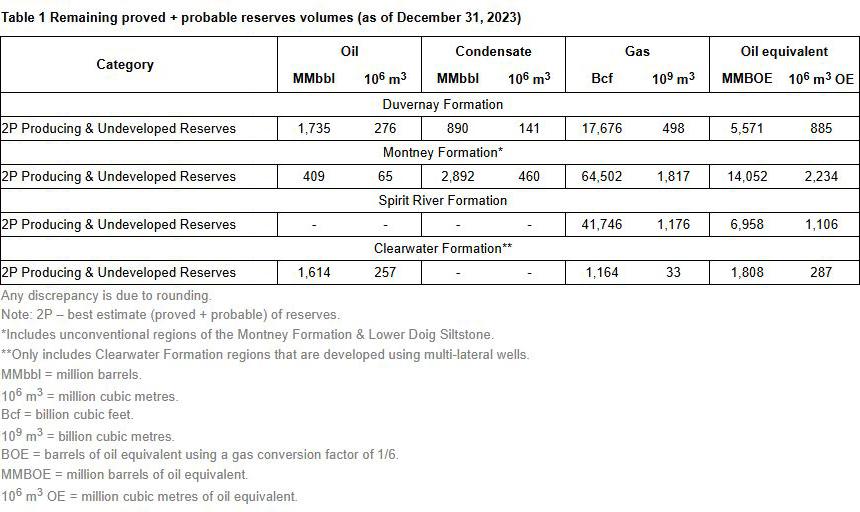Per the March 2025 Government of Alberta announcement on reserves, the AER continues to work with McDaniel & Associates Consultants Ltd. and this work will be completed over summer 2025. Once complete, the Alberta Energy Outlook will be updated to incorporate the change in reserve numbers.
Updated July 2025
In 2024 the Alberta Energy Regulator (AER) procured the services of McDaniel and Associates Consultants Ltd. (McDaniel) to evaluate the reserves and resources of Alberta using industry-accepted methods published in the Canadian Oil and Gas Evaluation Handbook (COGEH) for conventional, unconventional and oil sands formations. The new assessments will differ by including additional formations and applying current best practices and better data. Collaboration with McDaniel has presented an opportunity to improve our understanding of the province’s resource endowment and to refine our approach for assessments in future years. Unconventional reserves and resources in the Montney Formation, Duvernay Formation, Spirit River Formation, and regions of the Clearwater Formation developed with multilateral well designs are currently available (Table 1). The online web version of the Alberta Energy Outlook (AEO) will be updated as more results are delivered, and a final report prepared by McDaniel will be published as part of the AEO later in 2025.
The updated natural gas assessments for the Montney, Duvernay, and Spirit River formations are significant not only for Alberta but also for Canada. Based on the Government of Alberta press release in March 2025, with new estimates for these formations, Canada has more than doubled its gas reserves, moving it from number 15 to number 9 globally in reserves. The use of multilateral wells for development of heavy oil in the Clearwater Formation resulted in notable production growth over the last five years and contributed further to the provincial reserves.
Montney Formation
The Triassic Montney Formation contains both conventional and unconventional resource plays. To be consistent with the stratigraphic nomenclature used in British Columbia, the Montney Formation in Alberta was evaluated together with the Lower Doig Siltstone (Table 1). Unconventional gas reserves in the Montney Formation were assessed as 64.5 trillion cubic feet (Tcf), oil as 0.41 billion barrels (Bbbl), and condensate as 2.9 Bbbl. Total reserves for the unconventional portion of the Montney Formation were assessed as 14.1 billion barrels of oil equivalent (BOE). Assessment of conventional reserves in the Montney Formation by McDaniel will be released later in 2025.
Duvernay Formation
The Devonian Duvernay Formation contains only unconventional resources (Table 1). Gas reserves in the Duvernay Formation were assessed as 17.7 Tcf, oil as 1.74 Bbbl, and condensate as 0.89 Bbbl. Total reserves for the Duvernay Formation were assessed as 5.57 billion BOE.
Spirit River Formation
The Cretaceous Spirit River Formation contains significant natural gas resources from its Wilrich, Falher, and Notikewan members (Table 1). Preliminary natural gas reserves were assessed as 41.7 Tcf, the best estimate at the time of writing.
Clearwater Formation
The Cretaceous Clearwater Formation is a major target for thermal oil sands development in the Cold Lake region of Alberta. New technology has facilitated drilling novel multilateral well designs, while significant production of nonthermal heavy oil from the Clearwater Formation has also taken place since 2017. Between 2017 and 2025, multilateral production grew from ~30 to 230 thousand barrels per day (103 bbl/d), with McDaniel concluding it is Canada’s fastest-growing oil resource play (Table 1). Oil reserves at the time of this writing are estimated at 1.61 Bbbl and gas reserves at 1.16 Tcf.



